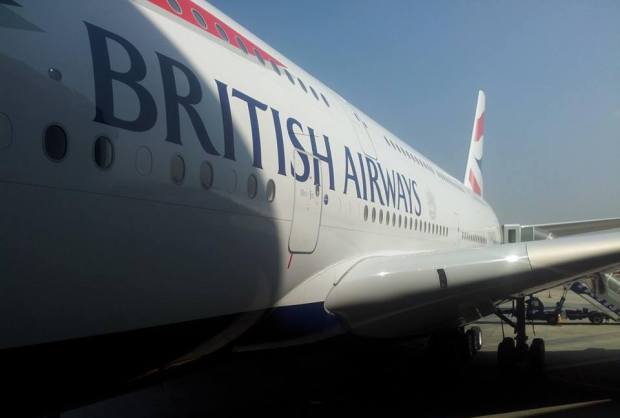
British Airways A380
For people that love the planes they travel on as much as the destinations they fly to, it is a real shame it’s 2013, and not 1973.
There was glamour in air travel back then, glamour that, through the 90’s and in to the 2000’s, thanks to budget airlines, cheap long haul travel and the internet, has long since faded. The last few years have seen the launch of more than a few new planes, but only two have really been newsworthy, Boeing’s latest offering, the highly efficient, twin engined 787 Dreamliner, entered service late in 2011. In 2009 Airbus upped their game, and the size of runways and control towers around the world, with the introduction of the monstrous A380, the largest passenger plane ever built.
Last week, British Airways took delivery of both.
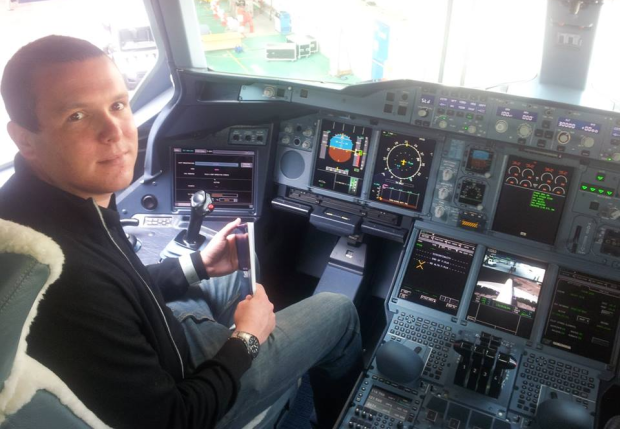
Michael Ball on the flight deck
I was delighted to be able to go along to the preview day of these two fantastic new planes, the last time I got to have a real look around a large jet was way back when I was a small child, before I grew up, and before the 2001 security changes prevented people seeing the cockpit and really getting to explore the machine they were flying on.
Up Close With The A380
I have flown on the A380 a few times, with Singapore Air not long after it entered service in 2009, and last year with Malaysian, and with both airlines the flight was very pleasant, when stuck in economy class for 13 hours, that’s as much as you could hope for and a damn sight better than many of long haul flights I have been on.
Last week was my first time to really get up close to the biggest plane at Heathrow. Boeing’s 787 Dreamliner is something I have been following closely for the last four or five years, as usual with a project of this size, it was beset with problems, soaring costs and high delays through the whole operation off course, and then less than a year after launch, the batteries started bursting into flames. While nobody was hurt and the risk was never a serious one, this was a huge blow to Boeing and the Dreamliner project.
soaring costs and high delays through the whole operation off course, and then less than a year after launch, the batteries started bursting into flames
The first new launch from the company in over a decade was grounded, airlines were cancelling their orders and demanding compensation, and most importantly, the public were losing faith. Advantage Airbus, or so you’d think. Not long after the launch of the A380, Qantas, one of the first airlines to fly the super-jumbo, had one start to fall apart in mid air, well, not fall apart, but some of the engine cover did come off. Again, like with the 787, no major drama and the plane landed safely, but the fleet was grounded, and Airbus lost face.
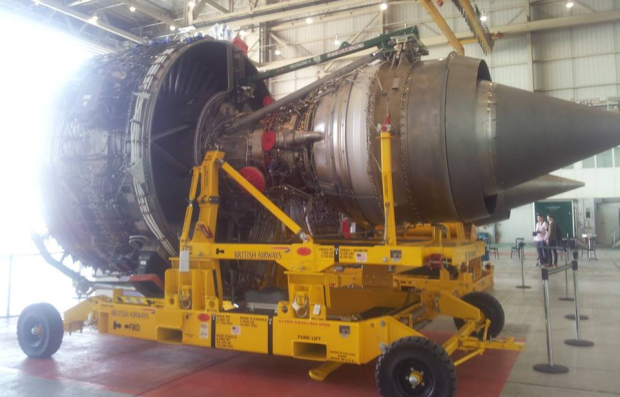
Rolls Royce Engine
What was a loss to so many airlines as they had to put their planes on the tarmac and wait for Airbus and Boeing to fix their flagships and nurse their bruised egos, was a gain for British Airways, as they had times their deliveries to perfection. More by luck than intention, the UK’s national airline received it’s orders after a full service, recall and fix up had been done, in tip top condition, and ready to hit the skies.
What’s The Airbus A380 Like?
So what is it like to fly on the two newest passenger airliners? Ahead of the launch of the A380, people talking about walk in shops, bars, restaurants and anything else you could fit on a plane that some articles made out was the size of a shopping mall. Boeing were somewhat more reserved in their marketing campaign for the 787, fly further for less money seemed to be the gist of it, while on board we’d look forward to the latest entertainment, best comfort, and quietest flight.
the way they recline means that the person behind you can still watch his or her screen and doesn’t end up with orange juice dumped all over their lap
So, do they deliver? The first thing you notice about the Airbus A380 is the size, from the outside it looks like two normal planes have been rolled into one, not length-ways, but sideways, it’s huge. Two floors the whole way along, this is the widest of the wide-body planes. This is something that you feel inside too, although the seating arrangement for the bulk of economy passengers is the same as that in the 747 (3-4-3), the A380 is notably wider. One thing that really enhances this feel is that the ‘walls’, where the window seats are, slope upwards and outwards away from the seat, making that seat feel like you have more room on the window side. The comfort in the A380 is as good as I have experienced on a plane, economy seats have more room than you’d be used to and the way they recline means that the person behind you can still watch his or her screen and doesn’t end up with orange juice dumped all over their lap every time you want a nap.
On-Board Entertainment
The entertainment is also as good as I have seen, an iPad sized screen with the latest TV shows and films, as well as the good old aircraft games, is fixed behind each seat, a USB plug, meaning you can charge your tablet, phone or MP3 player is also present, a nice touch. Moving up a level, though, is where the A380 really comes into its own. The upper deck has a few, 30 odd, economy seats, these are in what feels and looks like a private cabin, small and intimate, but without the price tag that is usually attached to these qualities in long haul travel, I expect, as do British Airways, that these 30 seats will be the first booked, and the hardest to get hold of.
The upper deck has a few, 30 odd, economy seats, these are in what feels and looks like a private cabin, small and intimate, but without the price tag
What I was most impressed about with the A380 and British Airways as a whole though, was the World Traveller Plus class. As a concept this is nothing new, a halfway house between the economy (coach) and business (club) classes. What was new was the comfort, I have tried this level of travelling before, and for the most part it is very much like economy class with a few added extras that you hardly notice and a price that you most certainly do, but with BA it really did feel like a step up. The seats only looked a bit wider and the legroom slightly longer, but when you sat in them it felt much closer to business class than it did to economy. British Airways say that these will cost about 50% more than economy, but you’ll no doubt be able to snap them up on deals for a fair bit less, for me, they’re well worth a few quid extra.
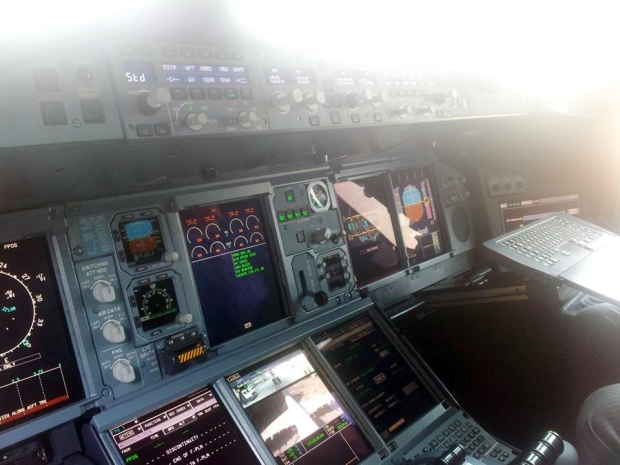
787 flightdeck
The 787 Dreamliner
The 787 Dreamliner is an engineering masterpiece, smaller, much, than the A380 and 747, compatible in size in fact to Boeing’s 777 and 767s. A long range, wide body aircraft, but one that goes for efficiency over capacity. Plane lovers have been more excited about this release than perhaps any passenger plane since Concorde or the 747.
Technologically speaking, the Dreamliner is revolutionary
Technologically speaking, the Dreamliner is revolutionary. Comprised primarily of composite materials, it flies further, on much less fuel, than the competitors and the planes it will replace. But inside there is not that much to get you excited, and this is what matters really. At the moment, BA have no plans to put first class seating on the Dreamliner, an odd move for me as the plane is set to run some rather long distance and popular routes, and a decision I can see the company changing when the newer variants of the aircraft are delivered in the coming years.
The Planes Have Class
I guess that the main thing to think of when viewing planes is that, for all the technological advancements and engineering genius that go into these new airliners, what people really need is comfort and class on board. For these reasons, the new planes are fantastic, and British Airways have delivered on every level. But also for this reason, they didn’t really need new plane to do it, a new fit out of a 747 or 777 with the fantastic seating and the great in flight entertainment would have been just as good for the passengers. The A380 is quieter and has that slightly wider cabin, but that is really where the in flight benefits end.
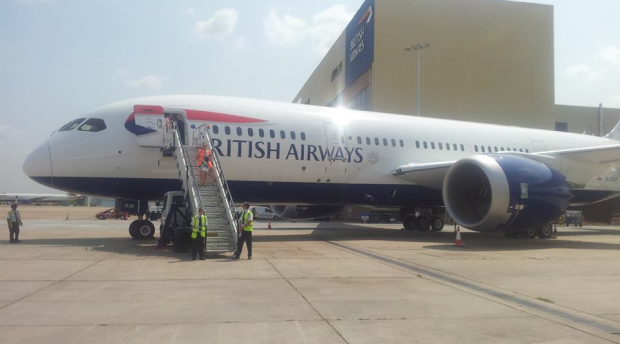
787 Dreamliner
However, for the airline, for their budgets and hopefully, in time, for the passengers, it comes down to cost. These two new planes can save up to 20% of the fuel cost per passenger on their predecessors. Not many people know this, but the long haul carries almost always lose money on every economy class seat bought, that is the price of aviation fuel and the amount that’s used to keep a 300 tonne plane in the air. So when it comes to the technical side, Boeing and Airbus have played a blinder.
So overall, between British Airways, Boeing and Airbus, two new aircraft will be entering service in the next few months and both of them are everything you’d hope for from a plane that started design over 35 years after the 747 first took to the skies and almost ten years after Concorde has retired. As icons, they’ll not replace those two, but there is a good chance no plane ever will, but for now, the A380 looks set to take over as the pinnacle of long haul travel, while the 787 will be the greatest plane in the skies, even if the people on board don’t know it.
Michael Ball was invited by British Airways to an exclusive preview of their new Airbus A380 and Boeing 787 aircraft.






